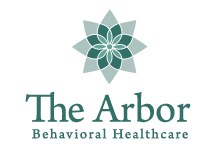The entire purpose of substance abuse treatment is to achieve sobriety. The biggest threat to maintaining sobriety is relapse. Treatment providers implement many strategies to ensure their clients are set up for long-term success during and after formal treatment. Yet, the unfortunate truth is that as many as half of people in recovery from an addiction relapse at some point. In no way does that diminish their potential for regaining sobriety. It does, however, make paying attention to the warning signs of relapse vital to avoiding a setback or even derailment.
Discover relapse prevention methods by calling The Arbor at 844.413.2690.
Relapse as a Process, Not a Moment
Staying sober is a daily task for people recovering from an addiction. It requires lifelong management and care. Relapse itself is often considered more of a process than a single moment of drug use. The three stages of relapse are emotional, mental, and physical.
People enter the emotional stage far before the thought of using drugs again ever crosses their mind. Negative emotions like anger, depression, sadness, hopelessness, or loneliness may present during the emotional stage. Support systems may wobble. Engagement in treatment or aftercare priorities may wane. Intervening at the emotional stage offers the best chance at avoiding a major setback. The warning signs of substance abuse relapse are also least clear in this stage. Close attention should be given to when negative emotions occur. Coping strategies may help alleviate the build-up of negative emotions that could give way to the next stage: mental.
People in the mental stage begin having thoughts about using drugs again. They may plan how to get them or even acquire drugs and stash them away as they continue to contemplate potential usage. Pulling back from the mental stage is difficult as the drug has now taken up brain space and come to dominate a person’s thoughts and attention. Finally, the physical stage of relapse is when someone uses a drug again. Just a single drug use, no matter the quantity, counts as a relapse. While later than ideal at the physical stage, it’s never too late to seek treatment.
Warning Signs of Relapse
With the understanding of relapse as procedural, it’s worth going into more detail about the specific warning signs of relapse. Temporal and spatial distance from the last time a person used a drug can cause them to romanticize their drug use. This always counts as a relapse warning sign. As life improves and withdrawal symptoms become a distant memory, people may forget how much drug use devastated their lives. They may question if the cons outweighed the pros.
Relatedly, another warning sign of relapse is when a person comes to believe they could use the drug again without falling back into addiction. While it is true that any single drug use does not produce addiction, this is never a healthy thought. Drug use is always unsafe and never controllable in the way people might hope. Other warning signs of substance abuse relapse include:
- Drastic behavior changes or mood swings
- Isolation or avoidance of social activities
- Decreased interest in hobbies
- Growing doubt about the effectiveness of treatment
Find the Support Necessary to Confront Relapse Triggers at The Arbor Behavioral Healthcare
Relapse triggers are related to the larger warning signs of substance abuse relapse. However, they are more related to specific physical and emotional states. If warning signs are the cliff, relapse triggers push people over the edge. Perhaps the most widespread relapse trigger is depression. Drug use is often a form of self-medication for negative emotions like depression or anxiety. Other relapse triggers are stress, exhaustion, and isolation.
Learn how to be more aware of relapse warning signs by calling 844.413.2690.

